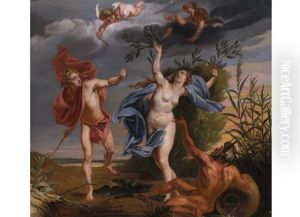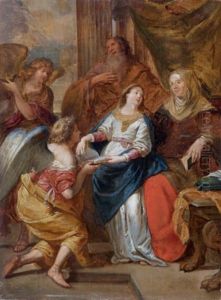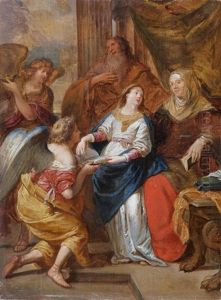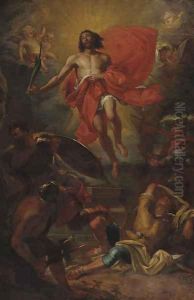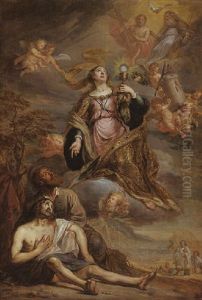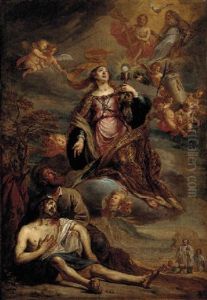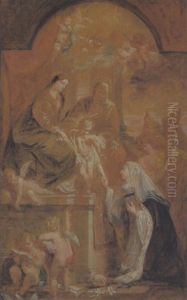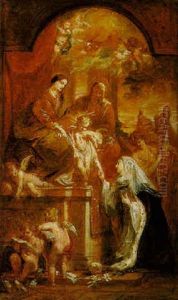Jan Van Cleve III Paintings
Jan van Cleve III was a Flemish painter born in 1646 into a family with a strong artistic tradition. His grandfather, Jan van Cleve I, and his father, Jan van Cleve II, were both respected artists in their own right, which undoubtedly influenced his career path and artistic development. The van Cleve family was known for their contributions to the Flemish Baroque tradition, which was characterized by dramatic expressions, bold colors, and intricate details. Jan III continued this legacy, focusing primarily on religious and mythological scenes, imbued with the same vibrancy and dynamism that defined the Baroque era.
Van Cleve III's early life was spent in Antwerp, a city that was a vibrant center for arts and culture during the 17th century. It was here that he received his formal training, likely starting in his father's workshop before possibly studying with other masters. Antwerp was home to the Guild of St. Luke, an association of painters, sculptors, and other artists, and it is likely that Jan III became a member, following in the footsteps of his forebears. His works often reflected the influence of prominent Flemish artists such as Peter Paul Rubens, known for his dramatic compositions and vivid use of color, which can be seen in Van Cleve's approach to his own compositions.
Throughout his career, Jan van Cleve III enjoyed considerable success. His works were sought after by the church, nobility, and wealthy patrons, who were drawn to his ability to convey complex biblical and mythological stories with intensity and emotion. He was particularly adept at using light to enhance the drama of his scenes, a technique that was a hallmark of the Baroque style. Despite the popularity of his work during his lifetime, Jan III's fame did not endure as strongly as some of his contemporaries, which is why he is not as widely recognized today.
Jan van Cleve III's contributions to the Flemish Baroque movement were significant, however, and his works remain a testament to the artistic legacy of his family and the vibrant cultural environment of 17th-century Flanders. He passed away in 1716, leaving behind a body of work that, while not as extensively documented as that of some of his peers, continues to be appreciated by art historians and collectors for its craftsmanship and emotion. His paintings, when they appear in auctions or exhibitions, offer a glimpse into the rich artistic heritage of the period and the enduring appeal of the Baroque style.
